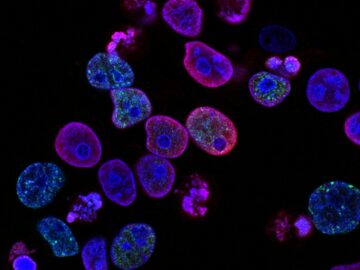Jellyfish are strange and fascinating creatures. Despite having no brains, skeletal system, or even muscles, these marine animals have survived very long. Did you know that scientists are even speculating that they have been around for millions of years?
That’s right—researchers are now shedding more light on the mysteries of this peculiar invertebrate. Here are eight amazing facts that they have discovered about the strange and interesting creature known as the jellyfish:
Jellyfish may not have a brain, but they have a lot of nerves
There is no centralized “brain” in the jellyfish. However, according to scientists, there are around 10,000 neurons scattered throughout its body that allow the jellyfish to detect touch, salinity, and even water temperature.
Somehow these neurons can communicate, enabling the creature to react appropriately. For example, jellyfish know which direction to swim to escape from predators or where the direction of possible prey is.
Jellyfish are not fish
Anyone who’s ever seen a jellyfish will not find it difficult to believe that they are not fish. Aside from the fact that they are aquatic creatures, you can easily see that they share no other similarities with fishes—no backbone, no scales, not even gills.
They propel themselves by squeezing out water from inside their body cavity. All they have is a bell (body) and some tentacles. They catch prey by shooting toxin-containing needles at anything that comes into contact with their tentacles.
Jellyfish belong to the animal group known for stinging others
Jellyfish are not always received with kindness. Most people, especially those who happen to be swimming nearby when a jellyfish is spotted, will often swim away for fear of being stung.
This is because these strange creatures, along with all the other animals in its group (sea anemones, fire corals, box jellies), possess stinging cells called nematocysts. They shoot out needles when something comes into contact with them. This is mainly for catching prey, but they also serve as an effective deterrent for anyone trying to eat them.
Jellyfish eat and poop through the same hole
The jellyfish body plan is quite simple and, in contrast to other organisms, relatively primitive. Their whole body, the bell, and the tentacles are mostly made up of water (about 98%). They lack organs like a heart or even a digestive system.
Their main body cavity is a stomach, food storage, jet propulsion system, and excretory system. With only one opening in the body (directed to the body cavity), they eat and poop through the same passageway.
Jellyfish come in different sizes
Jellyfish come from several different taxonomic subgroups, so it’s not surprising that they also come in different sizes. The smallest of these creatures, from the Staurocladia and Eleutheria genera, is only half a millimeter in bell (body) height and diameter. They are so tiny they can practically come up to you without you even noticing they’re there.
The largest, on the other hand, can grow bigger than people. One Lion’s Mane Jellyfish, (Cyanea capillata), for example, had fine, thread-like tentacles that extended up to 36.5 m.
Another giant jellyfish, the Nomura’s jellyfish, (Nemopilema nomurai), averages 0.9 m in bell diameter and around 150 kg in weight, with the largest Nomura’s jellyfish specimens reaching 2 m in bell diameter and weighing about 200 kg.
Jellyfish stings can be painfully fatal
Most jellyfish stings do not require hospitalization. After all, the toxins in their stingers are meant for paralyzing fish and other small prey only, so they should not be too much of a health concern for you.
Most people who get stung only report itchiness, redness, tingling, numbness, and varying degrees of pain, but nothing requiring severe medical attention (except for those who have allergies). First aid just usually involves vinegar and plucking off the visible tentacles.
However, there are species of jellyfish that you should avoid at all costs. The box jellyfish, for example, contains enough toxins to kill 60 people. A single sting from this deadly creature can kill a person in minutes. Their stings cause so much pain that some say it is enough to kill you if the toxins don’t.
Some jellyfish can be eaten
Turtles are not the only creatures that feed on jellyfish. In some parts of the world, jellyfish are considered a delicacy (if you know which parts to get and how to prepare them properly).
In Japan, for example, they can be eaten raw (like sushi), fried into crispy noodles, or served in salads. There’s even a Japanese candy that uses jellyfish as a main ingredient.
Jellyfish might be the key to immortality
Researchers have discovered a species of jellyfish that might just hold the secret to immortality. Turritopsis nutricula, dubbed the immortal jellyfish, baffles scientists because of its ability to turn mature adult individuals into their juvenile forms. Because of this strange talent, the immortal jellyfish’s life span can be considered indefinite.
For Your Kid’s Jellyfish Fascination
Given their nature, it’s impossible to keep jellyfish as pets. But that doesn’t mean your child can no longer enjoy them! Here are some of our top jellyfish merchandise picks:
- Jellyfish Lava Lamp by CALOVER
- Jellyfish Plushie by Avocatt Store
- Jellyfish (A Day in the Life: Sea Animals) by Louise Spilsbury
Frequently Asked Questions about Jellyfish
Can you touch a jellyfish?
For most jellyfish species, the nematocysts, or needle cells, are concentrated on the tentacles. The bell (or body) is often devoid of stingers or at least does not contain as much.
So, if you really must touch a jellyfish, determine the characteristics of the specific species, you’re planning to interact with and limit the contact to just the bell. However, for overall safety, it is still advisable to stay clear of any jellyfish or any of their parts.
What should you do if you get stung by a jellyfish?
As much as possible, try to remain calm to assess the symptoms properly. Then, with fine tweezers, pluck out the visible tentacles. Rinse the area with vinegar (a light acid) to prevent more nematocysts from firing.
Then, soak in or shower the affected area with hot water (40 – 45 degrees Celsius), not scalding. Do this until the pain subsides (maybe around 20 – 45 minutes). If the pain persists, you can drink some painkillers too.
In the case of a box jellyfish sting, pour plenty of vinegar, then carefully remove tentacles from the area. Make sure you don’t touch the tentacles with your bare hands. Then, call an ambulance or any emergency medical response team and inform them of the situation.
Hopefully, they have antivenom medication on hand. If the person becomes unconscious, then perform CPR.
How are jellyfish born?
The floating jellyfish you often see is the animal’s mature form (medusa). The jellyfish takes on this form when it is ready for sexual reproduction.
When fertilization is successful, a larva is produced, which develops into a polyp (the juvenile form of the animal). At the polyp stage, it is anchored to the ground (or a substrate) and unable to float.







